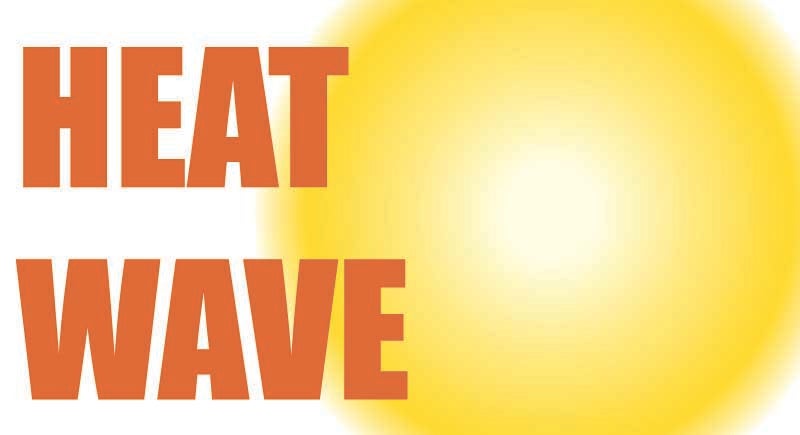High temperatures, Heat index combine to present health risks
Published 8:00 pm Monday, June 18, 2018
Beaufort County and much of eastern North Carolina remain under a heat advisory today, which likely will extend through most of this week, according to the National Weather Service in Newport.
“It’s North Carolina in the summer. We have, basically in the upper levels of the atmosphere, we have a ridge over us. In a ridge pattern, you’re generally going to see higher temperatures translate down to the surface,” said NWS meteorologist Morgan Simms. “We do have a lot of humidity that’s actually coming in — high dew points. That’s actually going to make it feel a lot hotter than it actually is.”
Simms said high temperatures today and Wednesday will be in the 90s, with dew points in the mid-70s. “In addition to the heat, it’s going to be really muggy. That’s going to cause heat-index values to climb up to close to around 110, especially on Tuesday, and it looks like a similar scenario on Wednesday.”
Although summer-like temperatures have covered eastern North Carolina for several days, summer does not officially arrived until 6:07 a.m. Thursday.
Scattered thunderstorms are likely throughout the week in Beaufort County, according to NWS forecasts, with the chance of thunderstorms at 20 percent today and tonight, at 40 percent throughout Wednesday and at 50 percent Thursday.
NWS advisories noted that once the heat index tops 90, people are at much higher risk for heat cramps, sunstroke and heat exhaustion if they experience prolonged exposure to the heat. Heatstroke is a medical emergency where the person’s body temperature reaches 106 degrees or higher. A person can become unconscious and need emergency medical assistance. Heatstroke can be fatal.
Heat exhaustion and heat stroke can affect anyone, especially people who work outside or in hot inside environments such as some manufacturing jobs. The Mayo Clinic offers the following advice to prevent heat exhaustion and heat stroke:
- wear loose-fitting, light-weight and light-colored clothing;
- avoid sunburn
- seek cooler places;
- drink plenty of fluids;
- avoid hot spots (inside of a parked car);
- let your body acclimate to the heat.
“It’s best not to exercise or do any strenuous activity in hot weather, but if you must, follow the same precautions and rest frequently in a cool spot. Taking breaks and replenishing your fluids during that time will help your body regulate your temperature,” reads the Mayo Clinic website.
Heatstroke symptoms include the following:
- high body temperature — a body temperature of 104 F (40 C) or higher is the main sign of heatstroke.
- altered mental state or behavior — confusion, agitation, slurred speech, irritability, delirium, seizures and coma can all result from heatstroke.
- alteration in sweating — in heatstroke brought on by hot weather, your skin will feel hot and dry to the touch. However, in heatstroke brought on by strenuous exercise, your skin may feel moist.
- nausea and vomiting — you may feel sick to your stomach or vomit.
- flushed skin — your skin may turn red as your body temperature increases.
- rapid breathing — your breathing may become rapid and shallow.
- racing heart rate — your pulse may significantly increase because heat stress places a tremendous burden on your heart to help cool your body.
- headache — your head may throb.
Heatstroke requires emergency treatment. Left untreated, heatstroke can cause brain, heart, kidney and muscle damage. Damage worsens the longer treatment is delayed, increasing the risk of serious complications or death.







